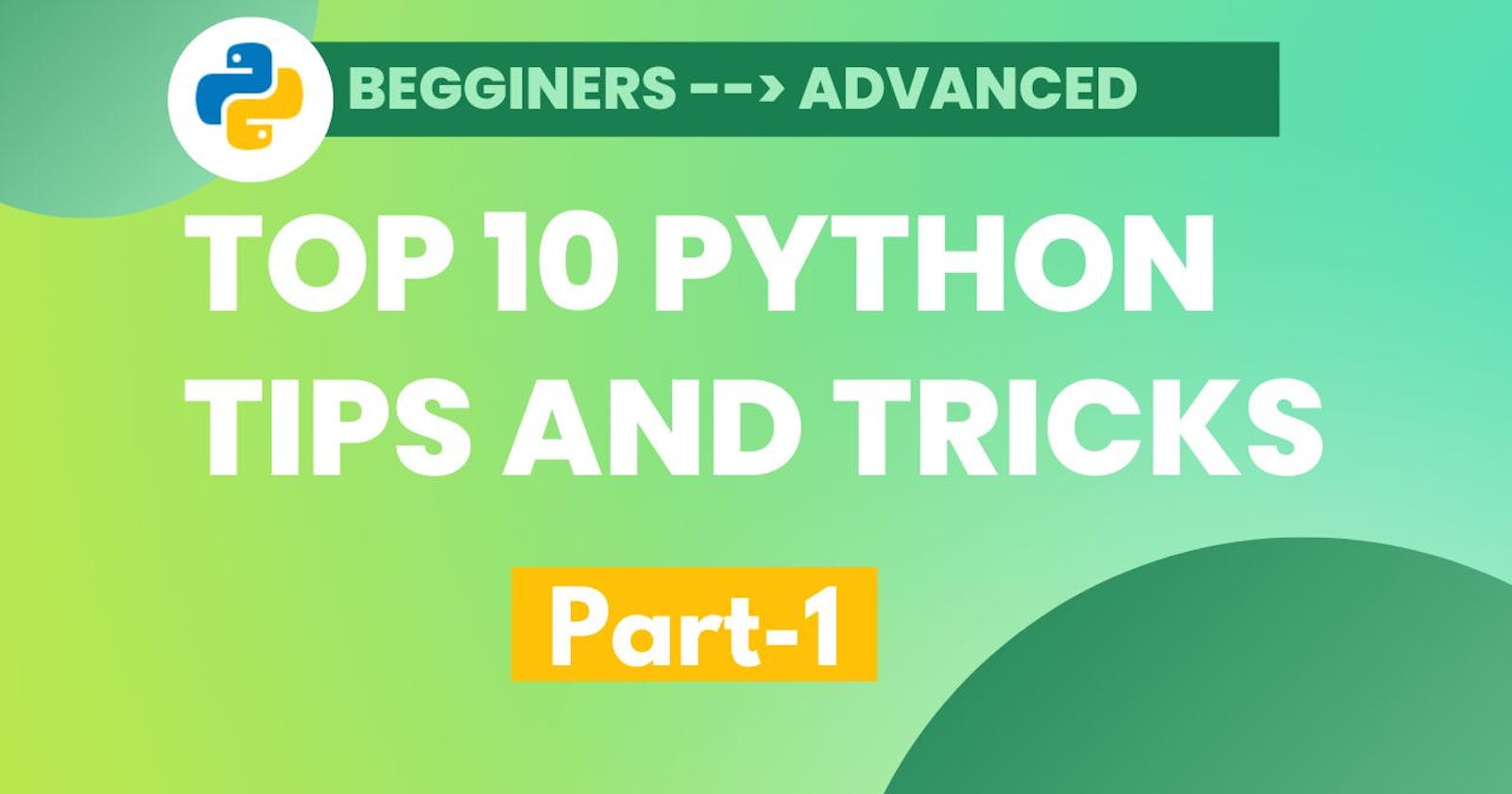Hi, Devs👋
Welcome to our list of the top 10 Python tips and tricks! Python is a versatile and powerful programming language that is widely used in many different fields, from web development and data analysis to artificial intelligence and scientific computing. If you're looking to improve your Python skills, you've come to the right place.
In this article, we'll be sharing some of the most useful and practical tips and tricks for Python programmers of all levels. Whether you're just starting out with Python or you're an experienced developer looking to take your skills to the next level, we hope you'll find these tips helpful.
So without further ado, let's get started with our list of the top 10 Python tips and tricks!
Python tips and tricks: Part-1
Here are 10 Python tips and tricks:
- Use list comprehensions to create and manipulate lists in one line of code. For example, here's how you could create a list of the squares of the numbers 0-9:
squares = [x**2 for x in range(10)]
- Use the "
zip" function to iterate over multiple lists at the same time. For example:
names = ['Alice', 'Bob', 'Charlie']
ages = [24, 50, 18]
for name, age in zip(names, ages):
print(f"{name} is {age} years old")
- Use the "
enumerate" function to loop over a list and get the index of each element. For example:
colors = ['red', 'green', 'blue']
for i, color in enumerate(colors):
print(f"{i}: {color}")
- Use the "
in" keyword to check if an element is in a list. For example:
colors = ['red', 'green', 'blue']
if 'red' in colors:
print("Red is in the list")
- Use the "
lambda" keyword to create anonymous functions. For example:
add = lambda x, y: x + y
result = add(5, 3)
print(result) # Output: 8
- Use the "
ternary operator" to write concise if-else statements. For example:
x = 5
result = "big" if x > 4 else "small"
print(result) # Output: "big"
- Use the "
callable" built-in function to check if an object is callable (e.g., a function). For example:
def foo():
pass
print(callable(foo)) # Output: True
print(callable(5)) # Output: False
- Use the "
partial" function from the "functools" module to create a new function with some of the arguments of another function already filled in. For example:
from functools import partial
def add(x, y, z):
return x + y + z
add_5 = partial(add, 5)
print(add_5(3, 4)) # Output: 12
- Use the
collections.Counterclass to easily count the occurrences of items in a list. For example:
from collections import Counter
fruits = ['apple', 'banana', 'mango', 'banana']
fruit_counts = Counter(fruits)
print(fruit_counts) # prints: Counter({'banana': 2, 'apple': 1, 'mango': 1})
- Use the
settype to remove duplicates from a list and to check membership efficiently. For example:
fruits = ['apple', 'banana', 'mango', 'banana']
unique_fruits = set(fruits) # {'apple', 'banana', 'mango'}
'apple' in unique_fruits # True
'pear' in unique_fruits # False
We hope you've enjoyed our list of Python tips and tricks. Stay tuned for more content like this. Happy coding.....
